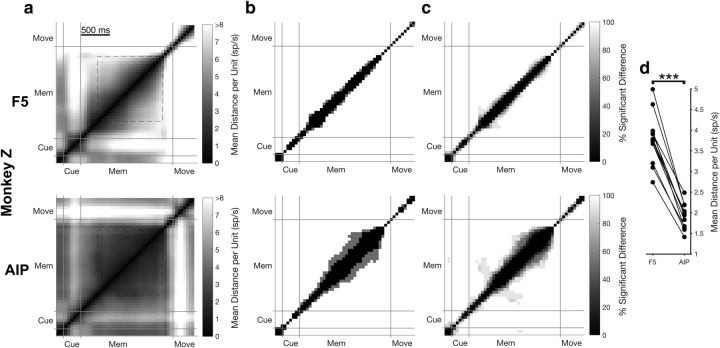Figure 6.
Neural trajectory stability over the course of instructed trials for an additional experiment. Same layout as Figure 5. a, Mean Euclidean distance in the full neural space for the Instructed trials between all pairs of time points over both grip types for an example dataset in Monkey Z (see Materials and Methods). Cue, cue epoch; Mem, memory epoch; Move, movement epoch. All plots are clipped at 8 spikes/s for visualization. b, For each pair of time points, distance results were tested for a significant difference using a bootstrapping procedure (1000 resamples in steps of 50 ms, p = 0.01). Panels show time pairs where a significant difference was found in the dataset of a for both grip types (white), one grip type (gray), or in no condition (black). c, Percentage of time points showing a significant difference over all datasets and grip types (6 datasets × 2 grip types). d, Mean distance over the stable portion of the memory period (650 ms after cue onset; go cue; a, dashed box) for all individual datasets and grip types (6 datasets × 2 grip types) across areas and paired according to recording session. Stars indicate a significant difference (Wilcoxon sign-rank test, p < 0.001).

